Colombia is a land of beautiful intrigue with a reputation that terrifies many would-be travelers. Our writer rode for a week through the bike-crazy country for a look at its burgeoning adventure-travel scene.
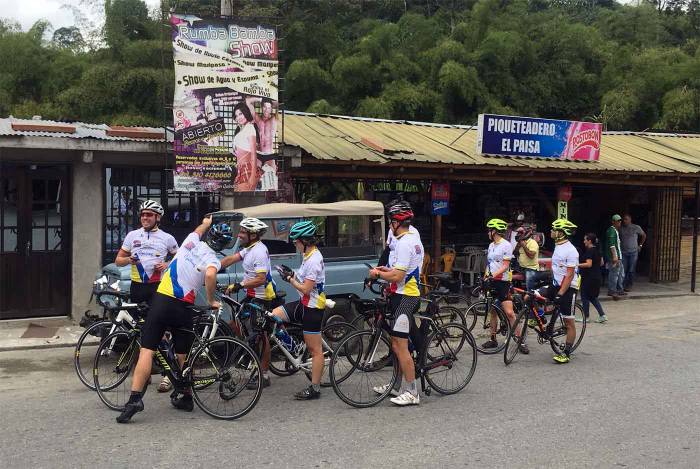
HISTORY IS FRESH IN COLOMBIA. The effects of 50+ years of civil unrest, coupled with decades of violence and drug trafficking, create a mood unique to any place I have traveled.
But there is a strong current of new hope. The country is poised on the edge of a historic peace accord between the government and FARC rebels, and President Juan Manuel Santos just received the Nobel Peace Prize.
Is it really safe? I traveled to Colombia to go on a grand bike tour and learn how the destination treats foreign visitors.
Note: Like anywhere, there are risks in travel. Learn about potential dangers before travel, avoid sketchy areas, keep an eye on personal belongings, and don’t put yourself in bad situations. Travel safe, travel smart.
Tour Colombia By Bike: The Trip
I traveled for five days of road cycling through a Unesco World Heritage Site called the “Coffee Cultural Landscape” west of Bogota. Here’s what I found.
1. Colombia is a phenomenal place to ride a road bike.
But bring your climbing legs because Colombia is steep! The Andes Mountain range begins in the southern part of Colombia then fingers out into three distinct chains trisecting the country.
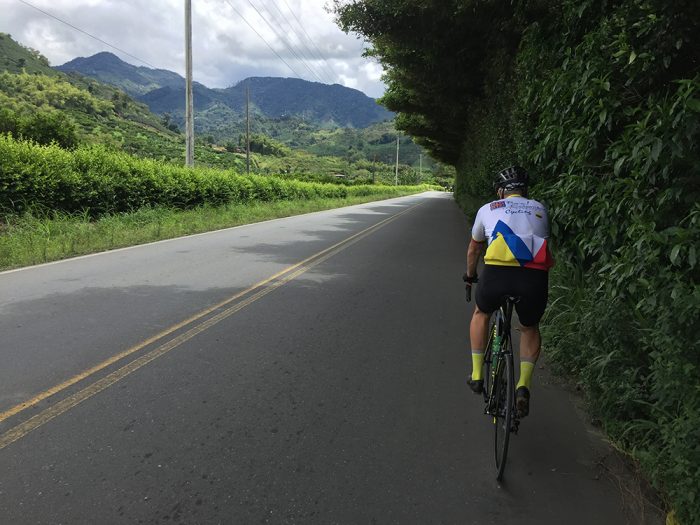
Our start town of Pereira, 180 km west of Bogota, sits at 4,900 feet, and lies in what is known as the “Coffee Triangle.”
After a morning ride through an undulating route of rolling hills, we finished with a 13-km climb up a series of switchbacks, including a final 800 m push up to Cafe San Alberto. There, at an elevation of 6,000 feet, nestled high above the town of Buena Vista, a third-generation coffee farm and cafe offered the smoothest, best-tasting cup of coffee of my life.
Until recently, much of the high-end Colombian coffee was exported, leaving poor quality coffee for the locals. San Alberto now solely deals in the high-end game with a stunning cafe overlooking Buena Vista.
2. Roads are sporty, but drivers polite.
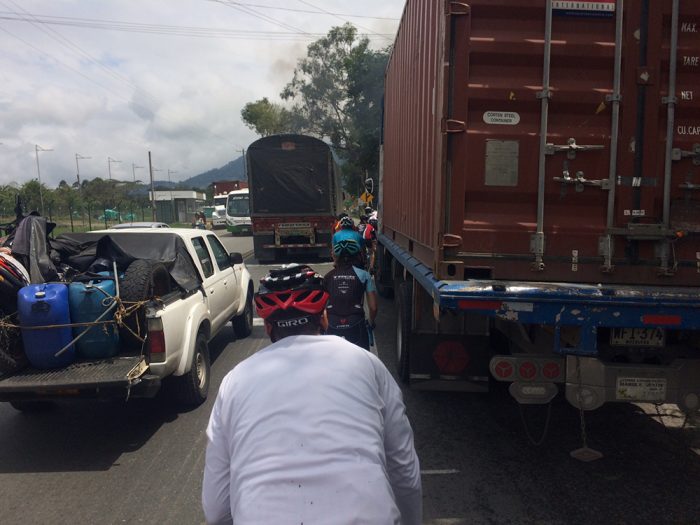
We toured in the central region riding narrow country lanes with no shoulders, serpentine switchback climbs, and eye-watering descents.
We often shared the road with many cars, buses, trucks, motos, and scooters—all within inches. I never felt uneasy riding in traffic because the drivers payed attention. Sure, there are car crashes and the like, but by and large I did not notice devices distracting drivers from the task at hand, and certainly felt no animosity.
3. The exhaust on the other hand…
Whenever we did ride through more populated towns and regions, the exhaust and fumes were caustic. I even resorted to pulling a bandana over my mouth and nose in a quasi-futile attempt at protecting my lungs.
In the mountains and out of the towns the air was clear. Next time I’ll get out of the cities quicker and follow the fresh air.
4. Don’t worry about the ‘coca,’ but try the panela.
Lots of people have asked if I chewed coca leaves, you know, for “energy.” Sorry to disappoint, but the answer is no. Had there been an offer, I sure would have. The effects of these leaves is not much more than a cup of coffee, I was told.
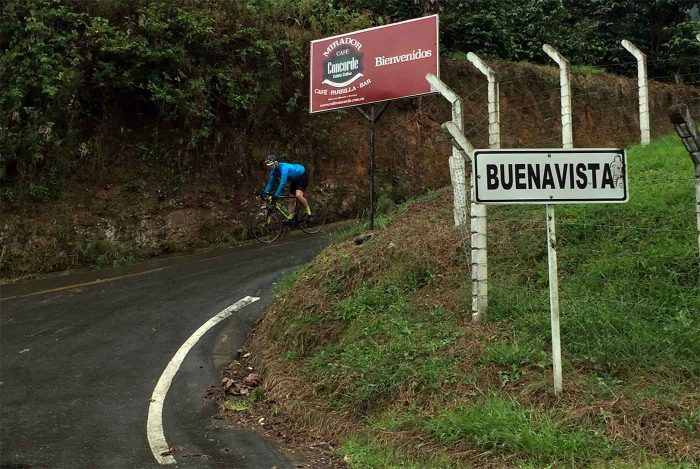
We did drink lots of agua de panela. Panela is basically pulverized sugar cane, boiled and then poured into molds and allowed to cool into blocks. The blocks can then be dissolved in boiling water and drunk hot or cold.
Many Colombians liken panela to Gatorade, and since it is basically sugar, it does give you an energy boost. It’s also popular with cyclists. When Colombians first began competing in the Tour de France in the 1980s they were said to “cook rocks” of panela.
5. Cycling tradition is highly regarded in Colombia.
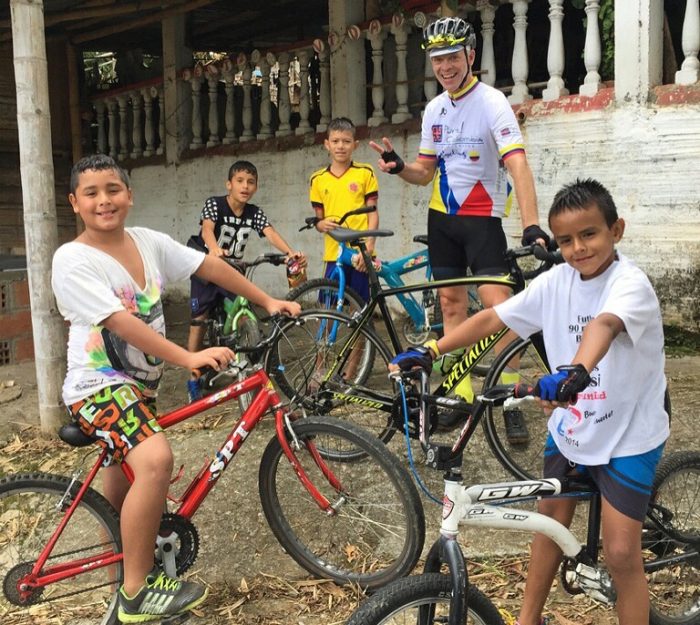
We saw loads of other cyclists out training on the roads. They like to wear full long-sleeve, euro-style race kits, perhaps in homage to their favorite stars, but also as protection from the sun.
Colombian pro cyclists are national heroes, dating back to Lucho Herrera, the first Colombian to win a stage of the Tour de France in 1984, up to present-day Vuelta España champion Nairo Quintana. One of our guides on the trip was Adelmo, a 32-year-old former pro and teammate of Quintana on the Colombian “Proud of America” Continental team.
He had a smooth, fluid, fast-cadence pedaling style, and the lithe climber’s physique of someone who has spent countless hours turning the cranks. He was often seen giving some of the riders an “assist” on the climbs with a gentle hand on their back as the road went upward.
6. Dogs are everywhere.
With no leashes, dogs just meander down the roadway like extras in a Scorsese film. Still, they are usually pretty docile and friendly. But one afternoon, hurtling down a 13-km descent, I was fourth wheel behind Carlos, Brendan, and Oscar, when I saw a dog loping into the road ahead.
I reached the apex of the swooping curve. The dog was in full stride, barking and gnashing its teeth in a direct line at my lower leg. Hands in the drops, I stood up out of the saddle. I shouted, “HEY!” and accelerated just beyond the lunging ‘perro loco,’ my calf muscle still intact.
7. Ciclovia — city streets for cycling only.

While the “Open Streets” initiative—closing a major city street to automobile traffic one day each summer for the benefit of cyclists, runners, walkers, kids, parents, dogs, and humans—has been gaining steam in U.S. cities in recent years, it’s been going on in Bogota since 1974.
They’ve perfected this practice over 40 years, and it’s awesome. Every Sunday, over 70 miles of city streets in Bogota are closed to motorists. It’s a glorious time to pedal the beautiful city.
8. Tejo is an awesome exploding game.
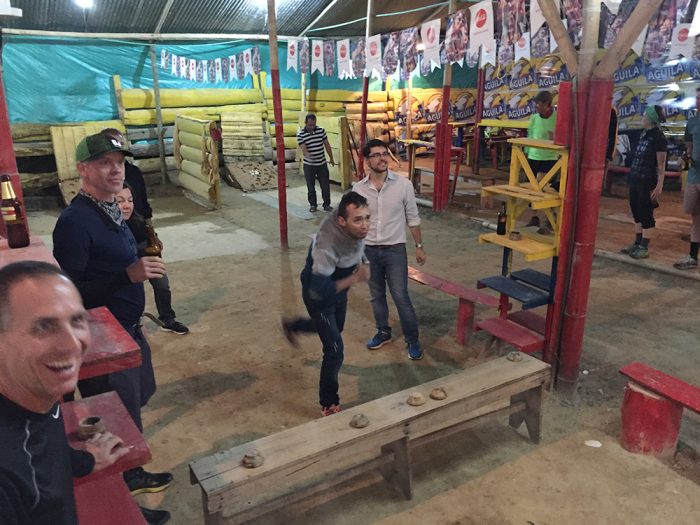
Tejo is essentially like playing a game of cornhole, but with explosives. How this hasn’t caught on in the United States blows my mind.
To play, you throw an iron puck (the “tejo”) toward an iron ring lined with soft clay. The bullseye is lined with small paper triangles filled with gunpowder.
Points are scored for your team when the explosion happens (and you have that sulphuric smell of victory). This 500-year-old game is the the national sport of Colombia, with teams and tournaments and trophies, and cerveza. Lots of cerveza.
–Hurl Everstone is a contributing editor and the founder of Cars-R-Coffins. Learn more about biking in Colombia at the nation’s tourism site.







